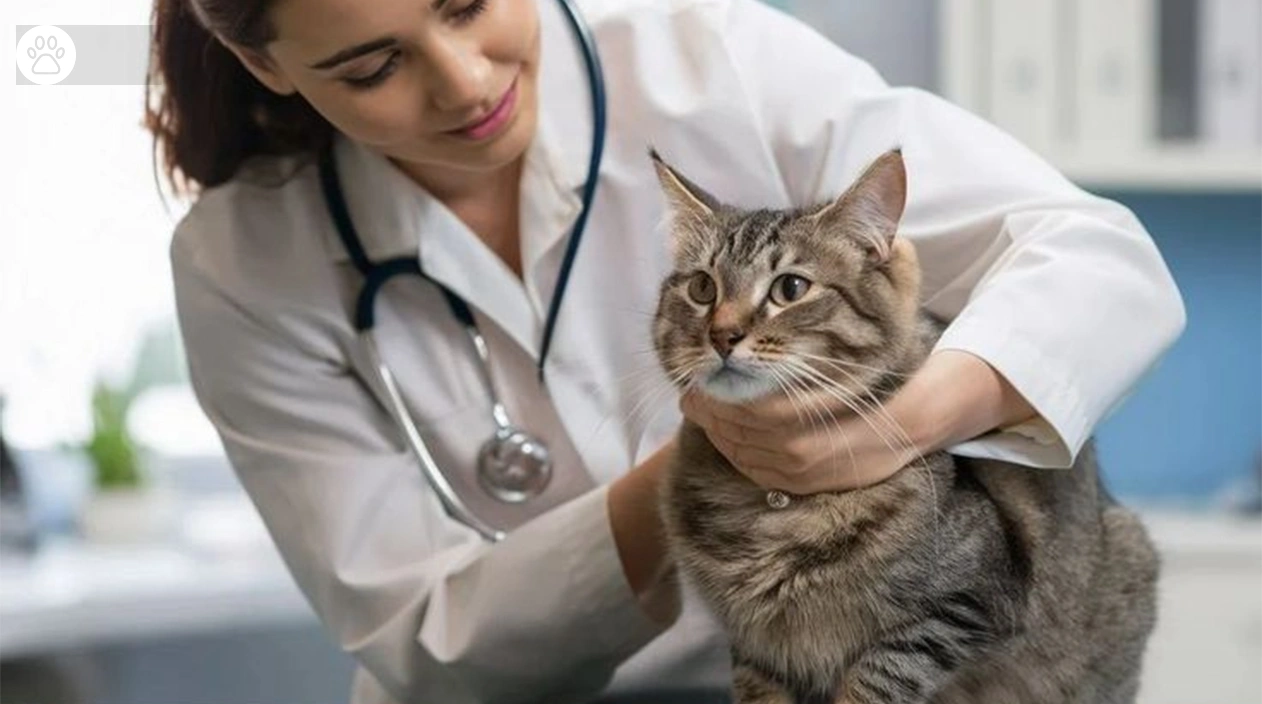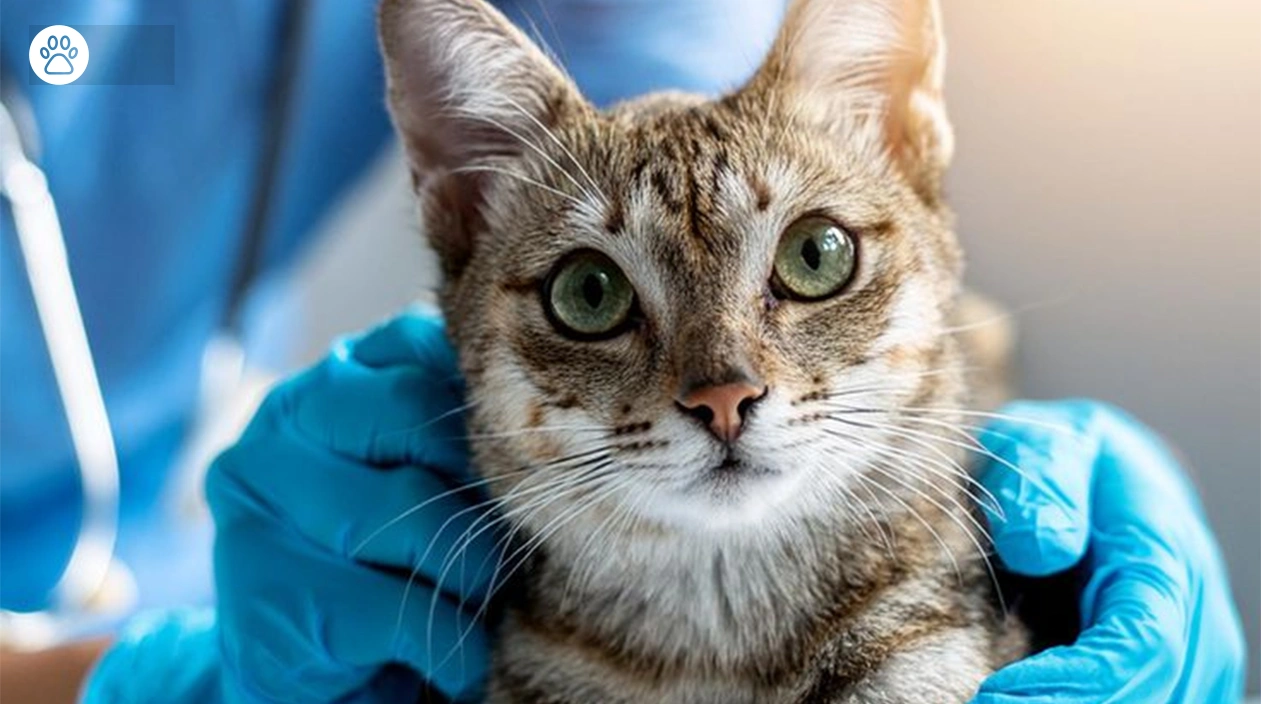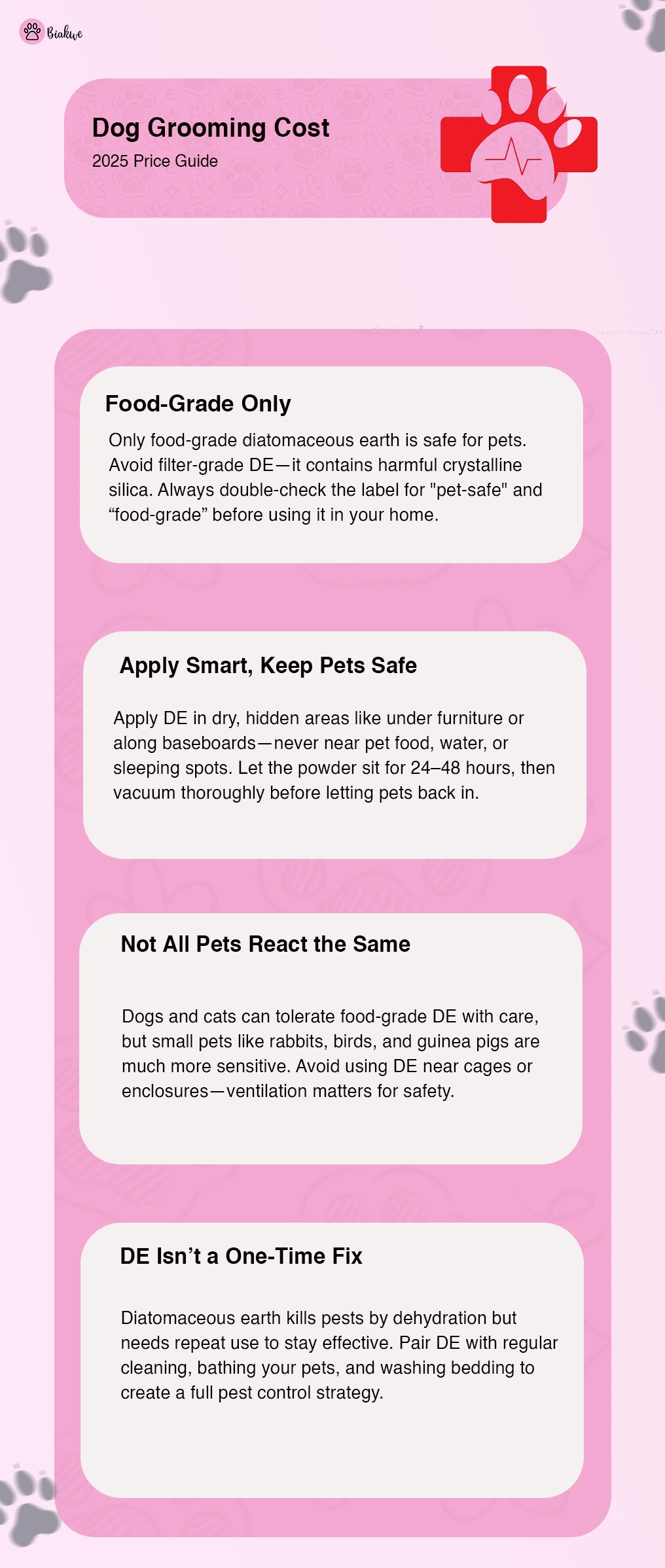Most owners of pets find themselves forced to choose between pesticides or harmful chemicals or allowing their home to become infested with pests. Diatomaceous earth (DE) has gained popularity due to these reasons. The fossilized algae powder acts as a natural pest control solution for various purposes.
The good news? The powder dehydrates pests without toxicity by killing fleas along with bed bugs and ticks. The proper application of diatomaceous earth brings both safety and effectiveness but all things must be done correctly.
Which Form Of Diatomaceous Earth Should I Use?
A Great question , and highly relevant. DE exists in two grades: filter-grade and food-grade diatomaceous earth. You will require food-grade DE. It’s labelled safe to be around pets and even used in some animal food. Filter-grade DE is unsafe, though.
It contains crystalline silica that’s harmful to people and animals when breathed or ingested. So when buying DE to be used in your home, be sure the product on the box specifically states food-grade and pet-safe powder. Not up for negotiation.

Visit this: Top Pet Names for Siamese Cats in 2025
The Improper Placement Could Result in Exposure for Pets
Location is important! You should place DE (Diatomaceous Earth) dry in hidden areas where pests live such as under furniture and baseboards and pet beds during cleaning and garden corners. It is crucial to position the DE materials away from all food and water sources that include both food bowls and water bowls and feeding sites and rest areas for your pet to sleep or groom.
Dry environments are the only appropriate area for DE use since wet DE products become useless which means bathrooms and damp lawns should be off-limits. The method works as directed while maintaining pet-free zones until the cleanup process is finished.
Must check: Dog Vaccination Schedule: When to Vaccinate Your Puppy and Dogs
Safe Application to Prevent Harm from Accidents
Pet owners often misuse diatomaceous earth incorrectly because of which their pets might encounter exposure issues and unfortunate outcomes. The proper method for applying food-grade DE involves initial vacuuming followed by a thin dispersion using either a duster or shaker device while distrusting the formation of large amounts of powder.
You must maintain a pet-free zone and let the prepared solution remain stationary for two days to a maximum of forty-eight hours. Through vacuuming you will eliminate both dead insects and the powder from the area. Weekly repeats of the application should be done when infestation persists. The recommended multi-step process maintains effective flea control while protecting your animals from dangerous exposures.

Must Read: A Guide to Black Smoke Maine Coons: Traits, Care and More
The Practice of Pets sniffing or licking Diatomaceous Earth leads to Health Hazards.
Prolonged exposure to food-grade diatomaceous earth by oropharyngeal contact or respiratory intake may lead to eye inflammation as well as lung and stomach discomfort without causing toxic effects to the body. A cat’s natural grooming activities make them exceptionally susceptible to harm while small domestic animals such as birds and rabbits together with guinea pigs are at the most severe risk.
Safety demands users should carefully apply DE while letting it work its effect safely and then perform cleaning to let pets enter the treated space. Seek veterinary guidance before giving direct applications to pets since natural treatments can become harmful despite being safe for use.
The Safety of Diatomaceous Earth differs among various pet species.
The proper use of diatomaceous earth poses no major risks to dogs yet owners must exercise caution with cats because of their tendency to groom and their sensitive respiratory systems. Small animals which include guinea pigs and rabbits and birds and ferrets need complete avoidance from treated areas because of their high fragility.
DE should never be applied to either cages or enclosures. The assessment of individual pet needs plays a crucial role in deciding whether DE treatment suits them instead of choosing alternative mild methods.
The safety of Diatomaceous Earth (DE) changes among pets:
- Dogs & Cats: Food-grade DE is safe when used prim and proper, but please avoid extra dust exposure to prevent respiratory irritation.
- Birds: DE dust can affect birds’ sensitive respiratory systems negatively, so it’s better to avoid using it around them.
- Small Animals (Rabbits, Guinea Pigs): DE can disturb their lungs, so it’s not recommended unless in an airy and ventilated area.
- Reptiles: DE may hinder their respiratory or digestive tract, so use with caution.
Only D.E does not Provide Permanent Pest Control
The effectiveness of diatomaceous earth as a flea and crawling insect killer exists only in repeated and ongoing applications. The pest-killing action of diatomaceous earth continues throughout time until pests are eliminated yet the substance does not have repressive effects.
Pet owners need to repeatedly apply DE but must use additional pest prevention practices that involve washing pet bedding, vacuuming and bathing animals. DE functions well as a supplemental tool for pest control although it must form part of a complete strategy for successful extermination.

How to Know if Your Pet gets Exposed?
The risks stem from either allowing pets into treated zones too quickly or from uneven distribution or inadequate settling time of the powder. To protect pets from diatomaceous earth exposure pet owners must hide it in specific areas and maintain a barrier of pet-free zones starting from 24 to 48 hours post-treatment. The safety precaution ensures proper working time of powder while enabling dust to settle down to reduce exposure risks.
Our Recent Blog: Black Ragdoll Cat Breed: Care, Personality, and Care Guide
In contact situations with diatomaceous earth some pets show signs including persistent coughing along with watery eyes and occasionally vomiting. The symptoms demonstrate how excessive powder intake through breathing or consuming too much of the substance creates distress in breathing or digestion pathways.
One should immediately contact a veterinarian when this situation arises. Swift veterinary treatment soon after exposure will boost the chances of stopping adverse problems from developing.
Summary
The correct usage of diatomaceous earth enables pet owners to use it as a safe natural pest control solution. The safety of your pets depends on correctly using the product while keeping them out of treatment areas and performing complete clean-up after treatments. When choosing between diatomaceous earth types always select food-grade DE because your vet can determine if DE matches the needs of your pet species. Using diatomaceous earth in safe conditions enables people to conduct pest management without resorting to dangerous chemical treatments.
